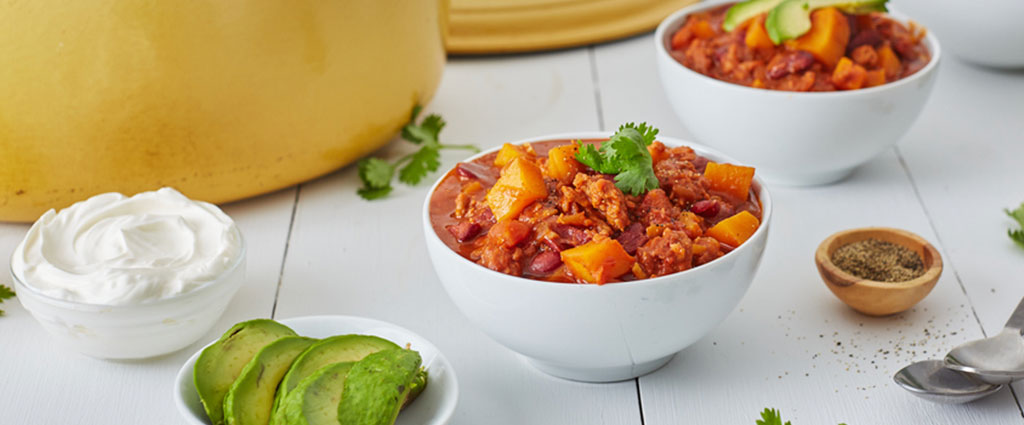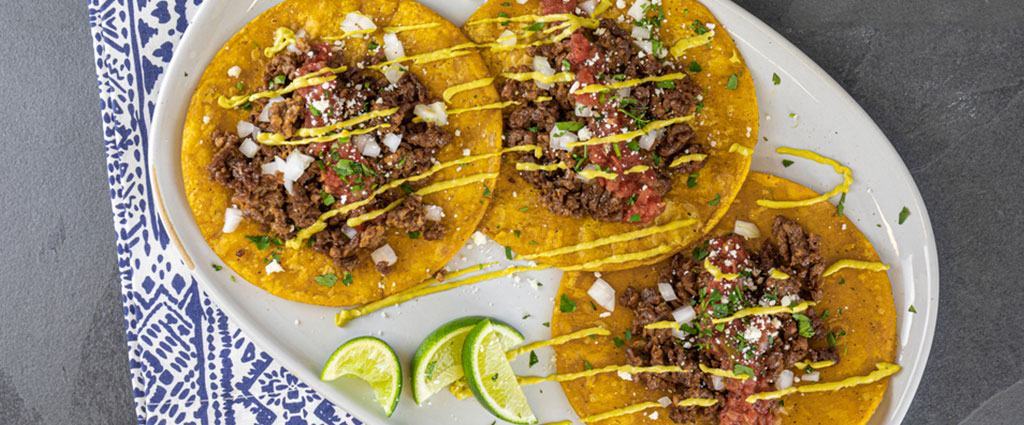From Idea to Grocery Store at Planterra Foods
A behind-the-scenes look at what’s involved in creating plant-based meats.
BY MEGHAN RABBIT
Traci Sample walks into the kitchen at her office with an idea for a new plant-based meat and heads straight to the spice rack—an enviable array that includes every spice and herb you could think of. As a registered dietitian nutritionist and senior food scientist at Planterra Foods, Sample is somewhat of a plant-based mixologist, adding different spice blends to a pea-protein base to come up with different flavors.
“As a food scientist and a dietitian, it’s not just about flavor but also about health,” says Sample. “It’s definitely a process that can take a while to get right, but it’s so much fun to watch an idea make it all the way onto grocery store shelves!”
So, how exactly does an idea get developed?
It starts with an awe-inspiring idea.
Bryan Clardy, head of R&D at Planterra Foods—the company that makes OZO plant-based products—is on a mission to make plant-based foods incredibly flavorful, naturally nutritious and so delicious that everybody—meat-eaters included!—is left feeling satisfied. To do this, Clardy and his team know they need to give consumers choices. “We have a consumer panel of more than 1,000 participants that we’re in constant communication with—everyone from hard-core vegans to others who are just starting their plant-based journey,” says Clardy. “We poll this group so we can understand what they’re looking for in terms of flavor, texture and more.” Then, the team takes that feedback—as well as their own inspired ideas—and heads to the kitchen.
Getting the right flavor-texture combo.
Planterra’s goal is to make the kind of plant-based products that people can swap into their diets in lieu of animal protein, which means the product development team has to hit the mark not just when it comes to flavor, but also texture, level of moisture and mouth feel. (After all, says Clardy, nobody wants a “gritty” burger.) This is the key to creating plant-based products that don’t feel like a compromise, adds Sample. “Our goal is to make the transition from animal protein to plant-based proteins the smoothest possible, so people don’t have to change their behaviors,” she says. “We want to get the flavor-texture combination dialed in so much that you never feel like you’re compromising.”
Bring on the taste-testing!
Once the team feels like they’ve nailed the flavor, texture and nutrition profile of a new product, they make enough of it for the entire R&D team to try. “We all taste it, and if we need to make some tweaks we head back to the kitchen and repeat the process,” says Sample. Then, the leadership team gets a taste. “When they’re blown away, it’s the best feeling in the world,” says Sample. “When we have to go back to the kitchen again to make even more tweaks, it can be challenging—but it’s the kind of challenge we all enjoy.”
Making sure a new product is as nutritious as it is delicious.
Once a recipe is finalized, Sample analyzes all of its ingredients to make sure it gets high nutrition marks. “We want all of our products to appeal to everyone looking to add more plant-based foods to their diet, whether it’s because they want to lose weight, prevent heart disease, treat Type 2 diabetes or more,” says Sample.
Seeing the finished product at the store.
When Clardy is grocery shopping and sees one of the products he helped to develop on the shelf, it’s thrilling, he says. “Creating new offerings is a fun process, but it’s not easy,” says Clardy. “It takes time to make plant-based ingredients look, taste and really feel like animal protein. But when we make it happen—when we create an experience where you don’t feel like you’re compromising—it’s a great feeling.”







Share this Post